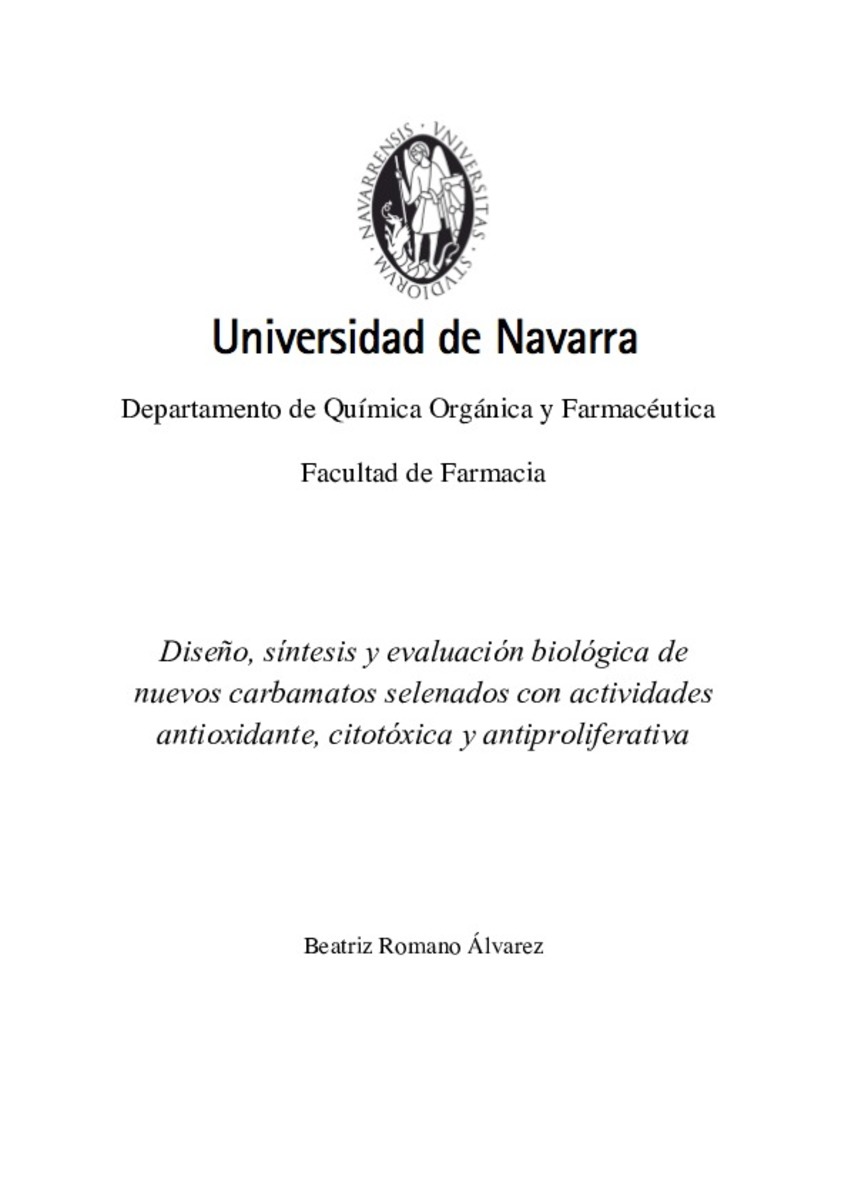Diseño, síntesis y evaluación biológica de nuevos carbamatos selenados con actividades antioxidante, citotóxica y antiproliferativa
Keywords:
Materias Investigacion::Ciencias de la vida
Química orgánica
Citation:
ROMANO ÁLVAREZ, Beatriz. “Diseño, síntesis y evaluación biológica de nuevos carbamatos selenados con actividades antioxidante, citotóxica y antiproliferativa”. Palop, Juan Antonio y Sanmartin, Carmen(dir.). Tesis doctoral. Universidad de Navarra, Pamplona, 2016
Statistics and impact
0 citas en

0 citas en

Items in Dadun are protected by copyright, with all rights reserved, unless otherwise indicated.







